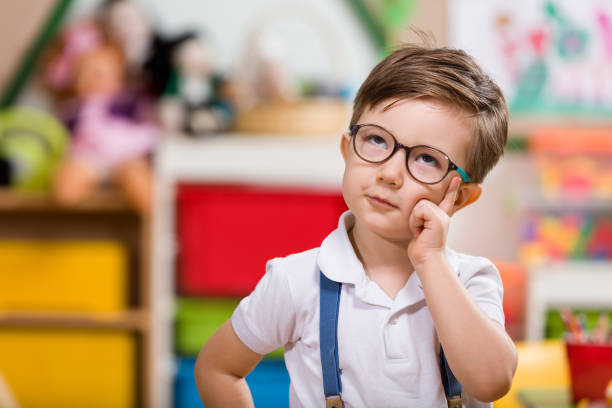Visual Perception and Attention in Your Child
Visual perception is most associated with cognitive development out of our children’s physical, cognitive, linguistic, emotional and social development areas. However, since there is interaction between all developmental areas, visual perception and attention studies will also significantly affect holistic development.
Visual perception and selectivity is the ability to perceive similarities and differences between objects, shapes, numbers, colors and words. Different studies can be carried out in parallel with the age of our child and the current level of development on these issues.
They can classify substances with their single and distinctive features. They also cannot understand abstract concepts. However, towards the end of the semester, self-centered thinking begins to diminish and is replaced by logical thinking. Therefore, this stage is the preparatory stage for concrete actions and it is recommended to approach the activities in this way.
Games and exercises that teach colors and shapes, exercises to find the differences between similar objects, matching, classification exercises or typesetting (pattern) exercises will greatly contribute to the development of your children in visual perception and attention.
Let’s consider some examples that you can do at home:
If you want to teach colors, you can choose a color each week. Always use that color in small painting and art work during that week. Remember, it is very important again during this period. In teaching about colors, be careful to teach primary colors first (red, yellow, blue) and then secondary colors. You can do a similar exercise while teaching shapes. The important thing is to be patient, not to present everything together, to teach one by one and by digesting.
Go on a color/shape hunt at home or in the garden. Take a basket, for example, collect red colored objects. (or collect square-like objects) Have small stickers for large items that won’t fit in your basket; Stick these stickers on objects with the color or shape you are looking for.
Make color/shape cards. Get two of each and play a matching game. You can play with the cards face up first; Later, as your child learns colors better, you can switch to matching games by closing the cards to improve their visual memory.
Prepare large cards from colors or shapes while your children’s friends are present. For example, when you remove the blue card, everyone should try to touch a blue object. Gradually increase your speed and make the game more exciting. You can do a similar work with colorful cushions or sheets on the floor. This time, when you say the name of that color, everyone can try to sit on the cushion/sheet of that color.
Classify with colors and shapes. Try to use three-dimensional materials as much as possible, especially in figures. Thus, your child will have the chance to discover and observe the features of that shape by touching it. (Do they have corners, are they the same length, etc.)
Make a big dice and put a different color/shape on each side. Whichever color comes up on the dice, the child wearing that color should stand up and say what color he is wearing, or the child holding the shape cards should raise it up and say the name of the shape.
Play a game of sorting shades of colors. (like light to dark, dark to light)
Play wheel of color or shape. Whichever color comes, your child, who has a picture of that color or shape on it, should come and put on that clothespin.
Prepare five cards. Put four same and one different color/shape and ask your child to find the different one. Put differences that are easy first, then harder to distinguish.
As your child gains experience in detecting differences, move on to more challenging exercises. Prepare five cards. Like five houses, five flowers, five faces. Let the two be the same; there are very small differences in others. Ask him to find the same ones and the differences in the others.
Cut different clothes from a cardboard. Such as skirts, blouses, sweaters, trousers and jackets. Prepare a rope for each category. For example, play a game of latching the skirts one by one on a rope. Then do this for all the different categories. Or cut the clothes you cut out of five different colored cardboards and prepare threads of five different colors. Play a game of latching red colored clothes onto a red string.
Make cards from large and small pictures of similar objects and play a matching game.
Cut different pieces of fabric (two of each) and play a matching game.
Create cards (two each) by drawing face shapes that reflect different emotions. Ask your child the name of the emotion, ask him to imitate it, and play matching.
Write different numbers on the cards and ask them to match. (Do not go above five for now); however, if your child now knows the numbers well, you can start adding higher and higher numbers.
